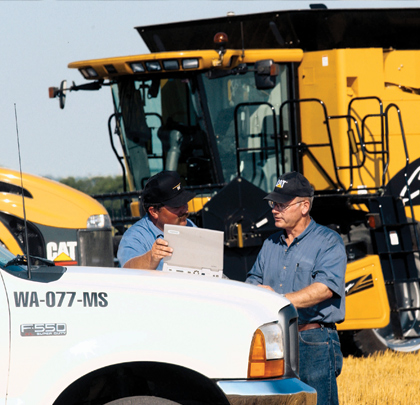The previous two articles on Computerized Maintenance Management Systems (CMMS) dealt with why we need one and how to select one. The focus of this article will be on avoiding traditional issues in implementing one.
If you were to ask most equipment or maintenance managers who have recently implemented a new CMMS, “How did it go,” the response would most likely sound like this: “We finally got it in. It took longer and cost far more than we anticipated. I am glad the bulk of it is over. Not sure when we will see a return though.”
We would like to say that, “Build it and they will come,” but the actuality is that many CMMS implementations fail to produce the expected returns. It is because they were poorly managed and executed. So, why are CMMS purchases over-promised and under-delivered? A 2011 survey found that 91 percent said work order management (WOM) is the most important feature of CMMS software, while only 34 percent say their WOM process is working well; 78 percent of respondents did not achieve ROI goals, while 50 percent said no ROI was achieved from CMMS software and 28 percent said they did not achieve anticipated ROI.
But expectations and deliverables are more likely to produce a gap. The table shows the difference between expectations and the degree that the software implementation produced an excellent rating from the same survey respondents. Why is there such a gap between what we want and what we get in regards to CMMS implementation?

While many would jump at blaming the software package, it is often deeper than that. Let’s look at nine reasons the software program fails.
Failure to allocate adequate resources. Often, the price of the program is just a fraction of the total cost of implementation. Companies often fail to allocate sufficient personnel dedicated to implementing the program. Or they may have underestimated the total cost.
Lack of management commitment and engagement. Management is responsible for the effectiveness of this investment and needs to take an active role from the beginning. Inadequate commitment of labor resources, poor viability of support, insufficient capital allocation, inadequate training commitment, and lack of monitoring project progress can be the death, or at least, the demise of a potentially good software implementation.
Failure to improve maintenance systems. Buying a word processor program such as Microsoft Word does not make you a better writer. If you struggled with grammar, spelling, diction, and style, then expecting a software program to improve those is beyond reasonable expectations. Ineffective systems and processes can mean trying to computerize poor processes and practices. Business Process Improvement (BPI) is a way to standardize and improve the maintenance practices using process mapping, reengineering, etc. A formal BPI review includes organizational structure, roles/responsibilities, internal/external rules and regulations, policies, mission/vision statements, process workflow maps and metrics. It should include an integration of Best Practices to maximize the ROI.
Garbage In-Garbage Out. Without an emphasis on data integrity and quality, folks will be frustrated from extracting vague and meaningless data. Using naming conventions and failure-cause-remedy codes to standardize what things or activities will be called can help to minimize this issue. Conducting periodic audits of work orders to ensure completion and accuracy will also help.
Lack of integration with other information systems. Failing to adequately map the information flow to other programs like ERPs can result in double entry and misinformation.
Viewing the CMMS project as a technology project. Too often, CMMS projects are treated as technology projects. This means the emphasis is more on using IT approaches without an understanding of the fundamentals of maintenance practice and requirements. Therefore, the temptation is to evaluate potential programs on their technology, on the various features and functions that one system offers over another. CMMS projects are more about change management than about technology.
Picking the wrong program. Far too often, CMMS programs are chosen that are inappropriate for the solution that is needed. For example, features and functions of one software package may be appropriate for maintaining rolling stock but may be unsuitable for an asphalt plant or concrete plant because of the inability to structure an equipment taxonomy or hierarchy.
Poor project management. Project plans must be inclusive and accurate. Variances need to be identified and addressed before the project falls woefully behind. Sound project management principals can help to prevent delays and scope creep, as well as missed targets.
Inadequate change management. Change Management using good principles of managing change is critical. John Kotter’s Model is effective at managing change. This means starting with a sense of urgency, developing a support group, and creating vision and goals. The implementation of a CMMS is a change in process and needs to be managed as a change effort. This focus is often overlooked or under-estimated. Change cannot be happenstance or serendipity. It must be well thought out and carefully planned. Communications and training is essential here.
A CMMS is only as good as the implementation strategy. That strategy begins by avoiding the mistakes others have lived through. ■
About The Author:
Preston Ingalls is president and CEO of TBR Strategies, LLC, a Raleigh, North Carolina-based maintenance and reliability firm specializing in the construction and oil and gas industries. Preston can be reached at pingalls@tbr-strategies.com, or visit www.tbr-strategies.com.
_________________________________________________________________________
Modern Contractor Solutions, March 2014
Did you enjoy this article?
Subscribe to the FREE Digital Edition of Modern Contractor Solutions magazine.

Harnessing the Power of CMMS Part III


